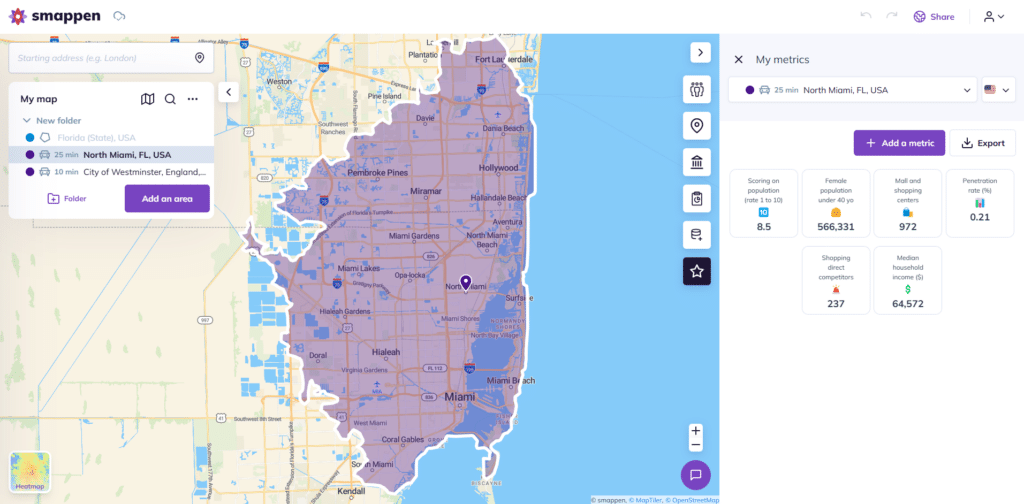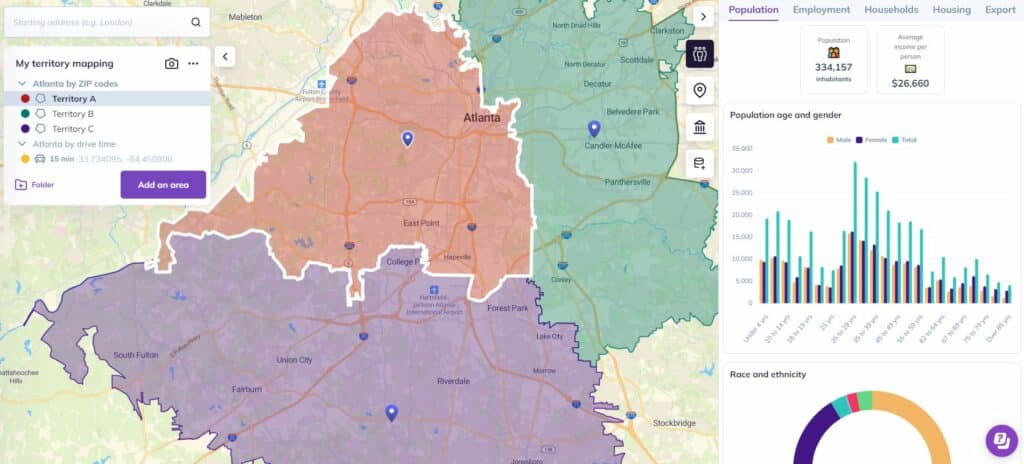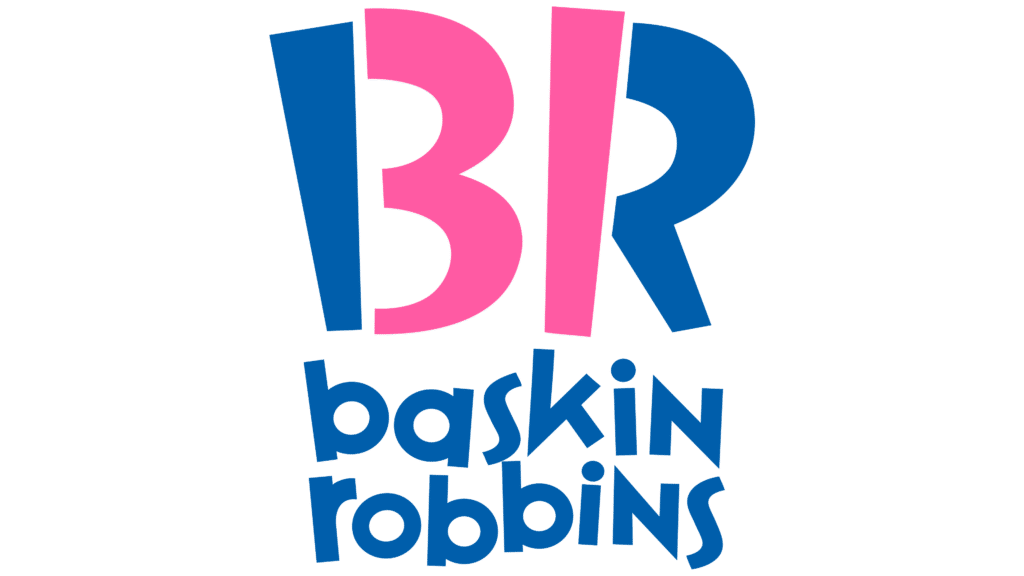Territory Mapping: all you need to know
Step into the world of strategic territory mapping – the cornerstone of efficient sales strategies and successful franchise expansion. This hub is your gateway to a series of articles that dive deep into the realm of territory mapping, offering insights on topics spanning sales optimization to franchise territory allocation. Whether you’re steering a sales team to greater heights or steering a brand towards growth, our curated resources are here to equip you with the expertise needed to navigate the intricate world of territory mapping.
What is Territory Mapping?
Territory mapping involves creating visual representations of geographical areas to allocate resources, manage franchise and sales regions, and plan strategic expansions. By leveraging territory mapping software, businesses can make data-driven decisions to enhance efficiency and profitability.
Benefits of Territory Mapping Software
Enhanced Strategic Planning
Mapping software allows for precise visualization of market areas, helping businesses identify opportunities and challenges within specific regions. This insight is invaluable for strategic planning and resource allocation.
Improved Sales Management
By clearly defining sales territories, you can ensure balanced workloads among sales teams, prevent overlaps, and optimize customer coverage. This leads to increased productivity and customer satisfaction.
Data-Driven Decision Making
Integrating demographic and sales data into territory maps enables businesses to make informed decisions based on real-time information, leading to better outcomes and reduced risks.
Why Implementing Territory Mapping in Your Business
Assess Your Needs: Determine what you aim to achieve with territory mapping.
Gather Data: Collect relevant data such as customer locations, sales figures, and demographic information.
Create Maps: Use the software to create detailed maps that reflect your business objectives.
Analyze and Adjust: Regularly review the maps to identify trends and make necessary adjustments.
Choosing the Right Territory Mapping Software
When selecting a software, consider the following features:
User-Friendly Interface: Ensure the software is intuitive and easy to navigate.
Customization Options: Look for tools that allow for tailored maps to fit your specific business needs.
Data Integration: The ability to integrate various data sources enhances the depth of analysis.
Scalability: Choose software that can grow with your business.
Smappen: Simplifying Territory Mapping for Businesses
Smappen is a user-friendly mapping software designed to help businesses visualize and manage their geographical areas effectively. With its intuitive interface, users can easily create, edit, and analyze territories without the need for technical expertise. The tool offers features such as customizable maps, real-time data integration, and collaborative tools, making it ideal for business owners and franchisors looking to optimize their operations and drive growth.

Read our best articles on the topic

Territory Mapping: Strategies for Sales and Franchise Growth
Explore the power of territory mapping – a game-changing approach for optimizing sales performance and franchise expansion.
Answering your questions
What is territory mapping?
Territory mapping is the process of visualizing and organizing geographical areas for business purposes like sales, service coverage, or franchise development. It’s crucial because it helps balance workloads, identify new market opportunities, and streamline operations—all of which can boost profitability and customer satisfaction.
How does territory mapping software help franchisors and business owners?
Mapping tools gives franchisors and business owners the power to create clear, data-driven territorial boundaries. This ensures franchisees don’t step on each other’s toes, while making expansion easier and more strategic. It’s like giving your business GPS for growth.
What are the benefits of territory mapping?
Improved sales performance
Enhanced customer satisfaction: Efficient territory management ensures timely service and support, leading to improved customer relationships.
Cost efficiency: Reduces travel time and expenses by optimizing routes and minimizing redundant efforts.
Data-driven decisions: Utilizes geographic and demographic data to make informed decisions about market strategies and resource allocation.
Scalability
How to create a territory map online?
Creating a territory map online involves several steps:
Choose a mapping tool: Select a reliable territory mapping tool like Smappen that offers the features you need.
Import data: Upload relevant data, including customer locations, sales data, and other key metrics.
Define criteria: Establish the criteria for dividing territories, such as geographic boundaries, population density, or sales potential.
Draw boundaries: Use the tool to draw and adjust territory boundaries based on your criteria.
Assign resources: Allocate sales teams, service personnel, or other resources to each territory.
Analyze and optimize: Use the tool’s analytics features to assess the performance of each territory and make necessary adjustments.
Implement and monitor: Roll out the territory plan and continuously monitor performance to ensure it meets your business objectives.
What is an example of a franchise territory?
Consider a national fast-food franchise expanding into a new region. The franchise territory might be defined by the following factors:
Geographic boundaries: Major highways or natural barriers like rivers that delineate the area.
Population density: Urban areas with higher population densities are given priority to maximize customer reach.
Competitor locations: Areas are selected to minimize direct competition with existing franchises.
Demographic data: Target demographics, such as age groups and income levels, are analyzed to choose the most promising locations.
Accessibility: Easy access for both customers and delivery logistics is considered.
Manage your territories with Smappen
The most intuitive territory mapping app on the market. Create your areas, sort them easily, and assign them. Use built-in demographic data or import your own to assess each territory’s potential.







